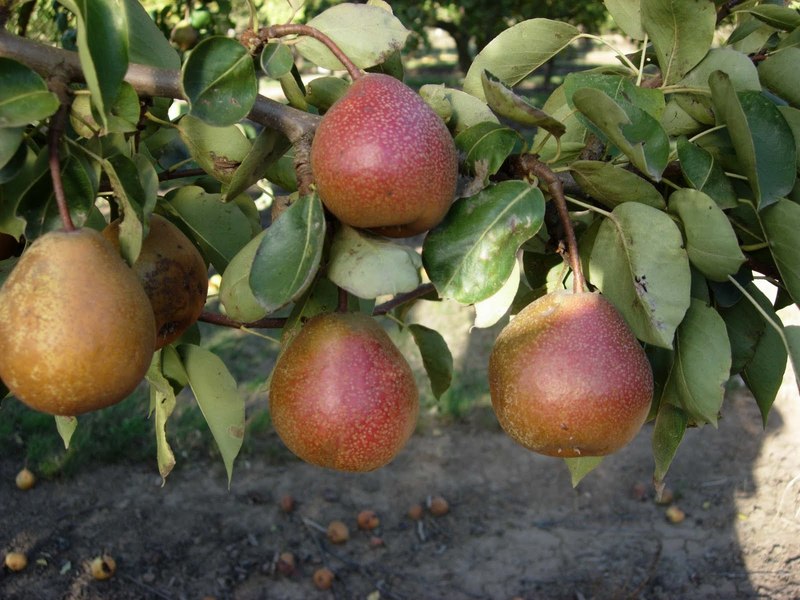In the stop-motion hit release by "Wallace and Gromit," Wallace faints and is revived by smelling a pungent English cheese called Stinking Bishop. The actual cheese Stinking Bishop, made by a single cheesemaker, is now overrun with orders. Stinking Bishop cheese, it turns out, is named after a variety of pear bred by a Mr. Bishop, who allegedly had a “stinking” disposition.
But stinking or not, Stinking Bishop pear is famous as an ingredient for pear cider or perry.
Also called Moorcroft Perry Pear or Malvern Hills, this is a bittersharp perry pear with rather small, almost round, yellow fruit, with a brownish blush and some brown russetting. It has medium acidity and tannin, but is high in sugar.
The Blakeney Red pear is another good perry pear. This one is a very heavy producer that ripens midseason. Blakeney Red pears are medium-sized, very juicy and have a crisp, slightly acid taste. The juice of this pear at one time was used to dye khaki uniforms their traditional buff color.
The aptly named Brandy pear goes back to 1820. This pear often bears fruit the year or two after planting, but even though it has high yields, it tends to only produce fruit every other year. The pears are small, with a pretty red blush. Brandy trees are naturally short.
You can, of course, use almost any pear for cider or perry. The so-called European pears such as Bartlett, Bosc and Seckel are good for the home orchard. Find regular pear trees at local nurseries and ask if they can special order Brandy or Stinking Bishop trees.
Fall is a great time to plant pear trees because the roots can take hold and get settled in over the winter.
Plant pears in well-drained soil in full sun. They prefer soil pH between 6.0 and 7.0. Dig a deep, wide hole and set the tree in the hole at the same depth it was grown at the nursery. Carefully spread the roots and gently refill the hole, tamping down the soil so there are o air pockets. Water thoroughly after planting, and water once or twice a week until frost. Most pear trees are hardy in USDA zones 5 through 8.
Prune off any broken or crooked branches, leaving a single central trunk or leader. Leave three to five side branches and remove all of the rest. Spread a good organic mulch such as straw or compost about two to three inches deep, forming a three-foot circle around the pear tree. You probably wont have to fertilize your pear tree unless you have very poor soil. Too much fertilizer will encourage leafy growth, but no fruit.
Pick pears before they are fully ripe, and let them ripen off the tree in a cool cry place.
Whether you plant a specific perry-type tree or just an eat out of hand variety, you will have pears for perry.
As for “Wallace and Gromit,” their creator got his first break as an animator for the video for Peter Gabriel’s Sledgehammer. So put on Peter Gabriel and eat some Stinking Bishop with some Stinking Bishop perry. Cheers indeed.














































